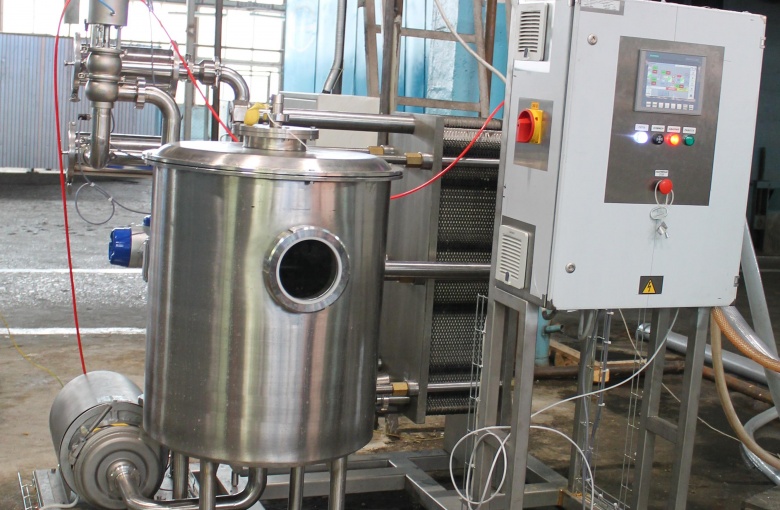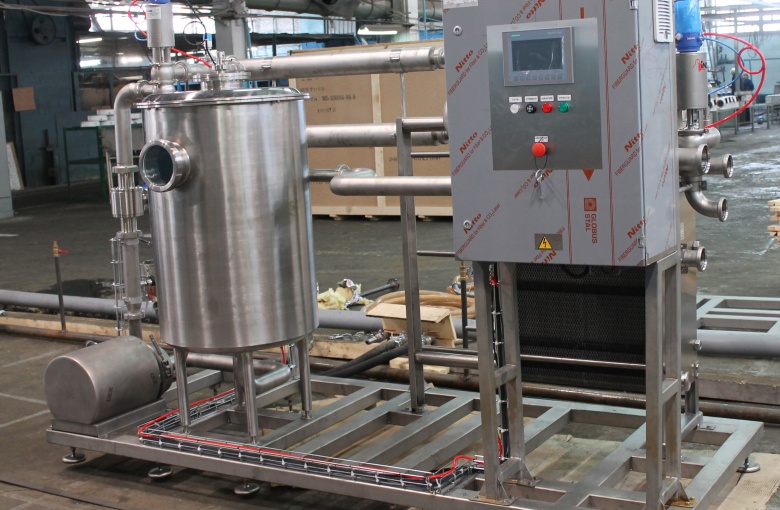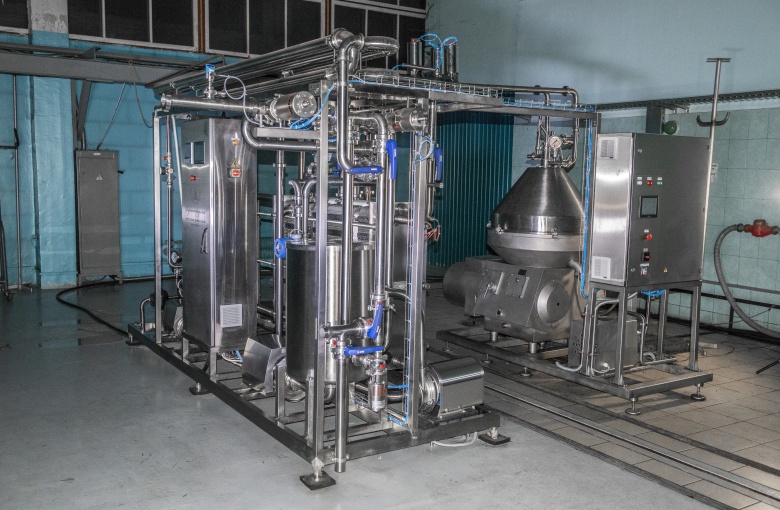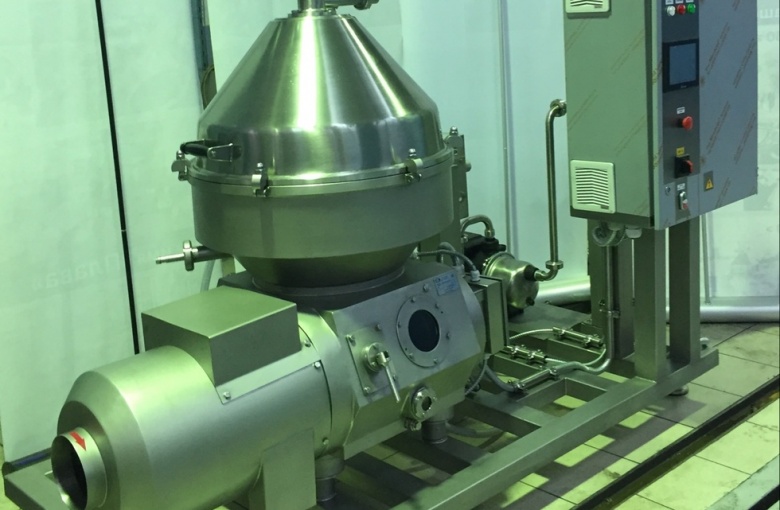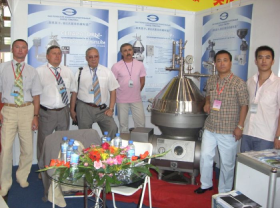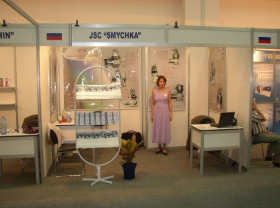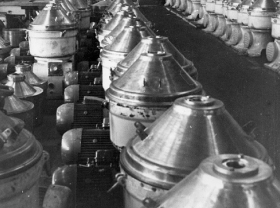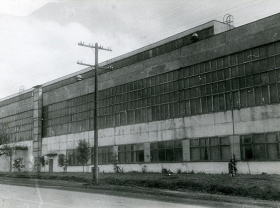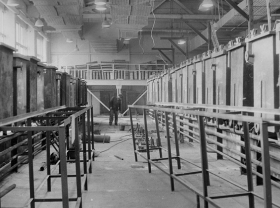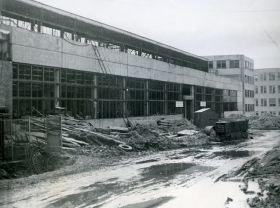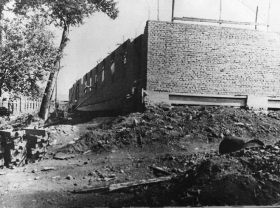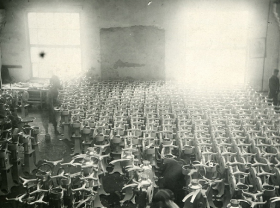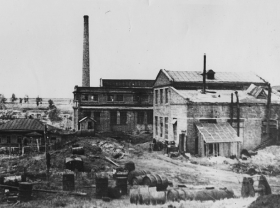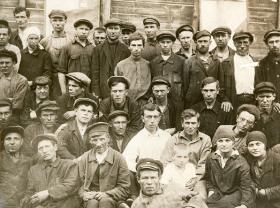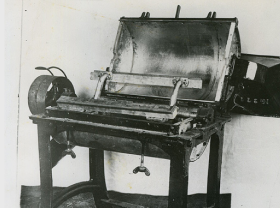Our history
There has been designed, manufactured and started mass production of new equipment.
And among them J5-Plava-OS-10-PU – the compact milk pasteurizer unit with automatic control of technological parameters and operation.
J5-Plava-ONM-CO – automatic standardized unit for continuous standardization of cream and skim milk.
In designed and sold J5-Plava-OVS-Co buttermaking line, we have tried to follow the original method of buttermaking very carefully.
The new separators are equipped with active safety sensors: vibration sensors, temperature sensors etc. Now the company together with Service center is working on project of fully automation of equipment produced.
There has been produced, installed and tested on our site, and then sold, the automatic buttermaking line based on J5-Plava-OVS-2.5 separator. The commissioning is currently being conducted.
The commissioning of dairy processing line with capacity of 5 000 liters per hour is successfully completed.
The testing of J5-Plava-ONM automatic standardization unit has been finished and commissioning has been done.
The milk reception units with capacity of 10 000 and 25 000 liters per hour has been delivered to customers.
Vasiliy V. Ershov was appointed CEO of JSC Plava.
In March 2019 at the initiative of CEO, company has laid out the new strategy of development – to manufacture and to sale not only separators but also dairy processing units and lines. These are automatic standardization units, milk reception units, tanks and silos, buttermaking machines.
The first compact milk pasteurizer unit with integrated cream separator has been delivered to customer.
The J5-Plava-OVS-2.5 cream concentrator with automatic sludge discharge was entered serial production in spring 2019. This machine have successfully replaced the out-of-date J5-OS2-D-500 separator. The first separators were shipped to Kyrgyzstan and Moldova.
The separators with capacity of 15 000 liters per hour were entered serial production – J5-Plava-OSM-15 cream separator and J5-Plava-OHS-15 whey separator.
The mass production of J5-Plava-OVS-5 cream concentrator has begun.
All models of separators can be equipped with stainless steel frame with water treatment system.
In October 2013, JSC Plava celebrated 75th anniversary of the first separator production.
The out-of-date J5-OS2-NS and J5-OME-S separators went out of production. All models of separators are manufactured in stainless steel version and equipped with frequency converter. The company started producing of separators with two-stage discharges: interdiscs liquid and sediment. The separators equipped with the safety sensors – oil temperature, bowl speed, vibrations - were entered serial production.
There was designed J5-AMB-1 separator to purifying of products of the microbiological synthesis. More recent the disc separators got new technological purpose – continuous extraction of microbiological liquids. As a result, the main purpose of this separator is extraction and concentration of particles from various culturing liquids.
In recent years the company has designed and has launched serial production of J5-Plava-OS-5 cream separator with automatic sludge discharge, J5-Plava-OSK-1 clarifier for somatic sells removal, J5-Plava-OO-5 and J5-Plava-OO-10 clarifiers for milk with capacity 5 000 and 10 000 liters per hour. J5-Plava-OO-10 clarifier can operate with cold milk.
Company became a part of holding “Vologda Holding Company” and changed its name to JSC «Plava”
From 1999, China has sharply increased producing and processing of milk. The first contacts between JSC “Smychka” and Chinese companies has appeared in the beginning of 2000. Finally, after long negotiation process, JSC “Plavsk engineering plant “Smychka” open the mission in China in 2006. As a result, the contracts on delivery more than 70 separators were signed among them contract with biggest Chinese dairy company “Mengniu Dairy Company Limited”.
From 2006, company has started producing of separators for bacteria removal. The design department have yet started to develop ones in the beginning of 2002. After a long work with scientific institutes, studies of foreign analogues, making a prototype and industrial design, the separator for bacteria removal was tested in 2005. Research and development was conducted at Dairy “Voronezhskiy” but industrial design was tested at Dairy “Schekino”.
In the same year company produced new equipment for oilfield applications: J5-OS2-NS(M) separator for drain and slop water and RGSg-353K decanter centrifuge which has been developed together with “TECOmash” company.
The separators equipped frequency converter has entered in serial production.
In 2003, the customers received first J5-Plava-OSCP-10 hermetic cream separators. JSC “Plavsk engineering plant “Smychka” remained the only Russian manufacturer producing this type of separators.
Between 2001 and 2002, company developed the North America market: the testing of J5-ARCG blood separators with capacity of 5 000 liters per hour was carried out in USA, some of milk clarifiers was delivered to Mexico.
In 2002 JSC “Plavsk engineering plant “Plava” has started to manufacturing of self-discharged separators with small capacity. The first was J5-OSCP-1S cream separator with capacity of 1 000 liters per hour. In order to reduce the size of machine, the special design of the bowl with external sliding bowl bottom has applied. Further, it served as the basis for the designing of separator with small capacity.
The quality system of JSC PEW «Smychka» is certified by German certification body TUV CERT and corresponds to requirements of international standard ISO-9001-9004. The application field of quality system covers the following activities: engineering, design, production, montage, servicing of separa-tors.
In the 10 years the plant develops the release of new products. The hermetic self-cleaning separators J5-OSCP-10, new type of self-cleaning separators J5-ОSCP-1S,J5-ОDT-1, the installation of cleaning and dehydration of diesel fuels and motor oils are designed and put into operation.
Victor Lifanov, CEO of JSC “Plavsk engineering plant “Smychka”, was awarded the title “Honoured Engineer of Russia” for achievments in the field of engineering by decree of the President of Russian Federation.
The sales volume increases considerably as compared with previous years. The great attention is be-came paid to export sales department, involving in promotion of the best separators if the plant on foreign market. As severe as competition is Plavsk separators attract more and more the attention of both domestic and foreign companies.
In connection with the commemorative of Engineer’s Day, Victor Lifanov, CEO of JSC “Plavsk engineering plant “Smychka”, was awarded the Order of Honour and Lyubov Ershova, Chief designer, was awarded the title “Honoured designer of Russia” for their great contribution to the design and development of new equipment.
International expert group consisting of project director of production restructuring Manfred Handel-Vang, Germany, leader of the group Peter Dassen, Netherland, project director Alexander Ermakov, Moscow started the work. The working groups were formed. The groups included the specialists of the plant of different social and age structure. They were united by only one thing - the true wish to make better the work of the enterprise, lead it out the crisis. The reserves of the enterprises, production and sales optimization ways were determined on these seminars, as well as the disadvantages were revealed, the methods of their elimination were proposed. The office work system, the methods of book-keeping, production cycles were studied. In May 1998 a specialist of international expert body prof. Fred Hodj, California arrived on the plant.
Self-cleaning separators of small capacity J5-ОSCP-3, milk processing sets of equipment.In the frame of complex program approved by Minatom dated August 3, 1995 the plant formed a part of international company "Lutch" (Podolsk) on September, 1996 in order to organize the efficient pro-duction process. The direct result of such formation with "Lutch" company became the decision of the "Smychka" plant to send the inquiry to socio-state fund "Russian privatization center" for participation in the program "Pilot project of restructuring of enterprises". «Smychka» passed the competitive selection and received the repayable credit from the World Bank for Reconstruction and Development in the first ten enterprises to pay the consulting company "Pro-Inverst Consulting.
The situation in Russian changed, the structure of industry was revised in order to increase its efficiency. The President of RF issued the Degree № 721 "About the measures of reorganization of state enterprises, voluntary associations into joint-stock companies". The employees of Plavsk Engineering Works "Smychka" made a decision on privatization of the plant on the factory meeting, having approved the composition of the initiative group, that bore the responsibility for execution of plant privatization plan and its insolvency nonadmission.
The modification of separators J5-ОМ2-Е-S, J5-ОS2-NS aimed at increase in productivity, reliability of released separators carried out.In 1987 Victor G. Lifanov became the director of Plavsk Engineering Works "Smychka"..
G.A. Cherenkov was appointed as a new director of the plant.The new models of separators PRT, ОH-2S, ОМЕ-S was designed, tested and then put into serial production. These models are notable for improved capacity, reliability considerable reduction of energy output and working efforts. The director of the plant G.A. Cherenkov and chief designer V.M. Paramonov was awarded by government award for design of these samples."Smychka" was under Ministry light and food industry for a long time. In 80th this Ministry was liqui-dated. The plant «Smychka" passed to Ministry of engineering industry - Minsredmash- military de-partment.
V. A. Grishko was appointed as a factory's director, at whom the basic reconstruction of the plant ended. The plant exhibited repeatedly the samples of new separators OMB, OSN-S on All-Union Exhibition of Agriculture, awarded diplomas and medals (gold, silver). Both designers and director were also awarded by medals.
In the second half of 1956 A.A. Bubna was appointed as a director of the plant. The plant started to develop 3- 4 models of new separators, including a large capacity (3000, 5000 l / h). The merit of the factory's director A.A. Bubna was not only to organize the fulfillment of the increased program, development of new products, but also in residential construction. It was built 25 semi-detached houses, a few five-storey houses, the factory's club "Smychka ", the building of the District Executive Committee, the stadium "Trud".
P.T Streltsov former specialist of Central Committee Body, working like a party organizer on Penza trench mortar plant during the war, became the director of the factory. In 1945- 1946 the disassem-bled tools TL TV from which then the parts processing lines were made, started to arrive the plant. Some of missing tools were found on storehouses on Tula factories. P. T. Streltsov promptly raised the problem of the engineering of new foundry with conveying casting and processing of frames on the unit-type machine tool. On Streltsov's initiative tow tank motors for power generation are supplied and installed on the plant. In 1947-1948 the question about boilers installation output of 3,5,7 tones/h and about turbines "Borzig" mounting capacity of 1300 and 800 kW sent from State military defense reserve was raised.
At the beginning of the war Plavsk plant «Smychka» was fully evacuated to Bessonovka settlement Penza region. During the war the foundry moulded air bombs and grenades bodies. In 1943 the army field kitchens were made in the production shop.teh Great Partiotic War continued, and in 1944 the Ministry of "Glavprodmash" issued directive about the reconstruction of Plavsk engineering works "Smychka", re-development and organization of dairy separators production.In 1944 M. P Bykov is assigned as a director of the plant to restore and develop separators. He had the experience in production organization of "STAR" separators before the war.
Plavsk Engineering Works «Smychka» started to produce separators «STAR». The engineer A. Gu-tovskiy from Perm was invited as an engineering manager for constant work. In 1938 the plant «Sm-chka » began the mass production of manually and mechanically operated dairy separators capacity of 300 - 600 l/h.6 directors were succeeded again from 1937 to 1944.
The press room begins to be built. The profile of the plant changed within first five years. It produced machinery for food industry besides traditional threshers, and clover graters. They are potato peelers fish scalers and pulping machines and etc. The state decided to start up the production of dairy processing machinery in Central part of Russia. They fixed their choice upon Plavsk Engineering Works "Smychka".
Ivan I. Vagilevich became the director of the plant. The plant "Smychka" finally came to Plavsk by the beginning of 1930.
The factories were merged according to Resolution of Plavsk regional authorities. The factories union received the plant class, it was decided to name it as «Plavsk engineering plant «Smychka». The 10th regional party conference taken place on December 2, 1928, noted the growth of personnel of the plant up to 255 persons, profit earning in 12 thousand rubles, cutting of production costs by 10% . the plant received order for 1600 thrashers and 1200 clover graters .
Tulaselhoztrest transfers the factory to republic association "Soyuzprodmashine". All-Union Exhibition of Agriculture USSR transfers them to Plavsk district executive committee.
The factory's name is "Smychka". However, the planned production growth was stopped by accident. January 19, 1926 at 8 h and 20 the fire from the explosion of the engine occurred at the factory. Ma-chine-assembly department, woodworking, engine room, office, a part of equipment were damaged seriously by fire. The damage was about 15 thousand rubles.
The factory in the Sergievskoy village (renamed in Plavsk) headed by V.A.Kutepov, a native of Tula working families. He defended the factory, organized the metal collection. Even during this critical time-the factory manufactured and sold 1699 threshers.
Tulaselmachtrest decided to close both factories as unprofitable. Provision almost stopped. But party leaders, workers addressed the province soviet of metalworker trade union. The trade union didn't permit to close down factories. The enterprise continued its activity and the release of products.
The K.A. Tenlyakov factory was nationalized by the Minutes № 39 of Tula province executive commit-tee of Soviet of People's and Red Amy's Deputies dated September 3, 1920. The factory was headed by Titovs, I.S. Nikanorov and P.P Saharov.
Revolution and civil war had intervened to measured life of Teplyakov factory. Six directors had been replaced from 1919 to 1924. The factory had faced considerable difficulties.
In these turbulent years, the working collective of former Teplyakov’s factories had been emerged again. The factories had been named as “Agricultural machines factory #2 in Molochnye Dvory” and “Factoru #3 in Plavsk”.
From the census of industrial enterprises of Krapivin district:«1. The factory of agricultural machines by Kuzma A. Teplyakov. It manufactures threshing tools, dry-ing machines, clover graters, spare part for agricultural machines, ploughs.the plant produced 220 threshing tools, 35 drying machines, 53 clover graters, 95 ploughs during the year. Equipment of factory technology: oil, kerosene and suction gas engines, area of the plant- as-sembly and mechanical.2. The factory of agricultural machines by A.A. Teplyakov. Field of activity - - assembly and me-chanical. The plant produced threshers, straw shakers, clover graters, drying machines, sorting ma-chines, winnowers, gears and bearings, bushings, driving mechanisms.Annual output: 51 threshers, 14 straw shakers, 8 clover graters, 11 drying machines, 2 sorting ma-chines, 11 winnowers.
The factory was divided between two sons of Alexay M. Teplyakov. The elder son - Kuzma-became a master in Molochniye Dvory. The junior son - Andrew - founded the individual factory in Sergeevskoye village (old name of Plavsk).
The workshop produces independently threshers, winnowers, sorting machine, clover grater, ploughs, harrows, and other agricultural tools and it is officially approved as a mechanical works.
A descendant of business-like peasant Alexey M. Teplyakov from Molochniye Dvory together with his two sons Kuzma and Andrew, established the enterprise - a workshop where they made wooden toys, joiner's orders and repaired agricultural machines.
In 1874 the Teplyakov enterprise launched the products for 500 rubles in accordance with the first official report of the Estate Committee of His Majesty the Emperor, where it was firstly mentioned.
There is a beautifull amd mordern Molochniye Dvory settlement in today's Plavsk district, Tula region. It was formerly called as Samohvalovka village, Krapivnenskiy uyezd.
A peasant Teplyakov distinguished in Turkish company and decorated with an order for it lived there. He was rewarded by tsar charity according to which he had right to build a roadway gate on the road passing by the village and to collect money for rent of the road. In his turn he had to kept roads in order and under constant supervision.


